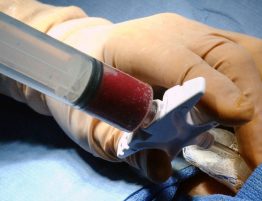
Rheumatoid Arthritis (RA)
Arthritis means inflammation in a joint. That inflammation causes redness, warmth, swelling, and pain within the joint.
Rheumatoid arthritis affects joints on both sides of the body, such as both hands, both wrists, or both knees. This symmetry helps to set it apart from other types of arthritis.
RA can also affect the skin, eyes, lungs, heart, blood, or nerves.
What Are the Symptoms?
The warning signs of RA are:
Joint pain and swelling
Stiffness, especially in the morning or after you sit for a long time
Fatigue
Rheumatoid arthritis affects everyone differently. For some, joint symptoms develop gradually over several years. In others, it may come on quickly.
Some people may have rheumatoid arthritis for a short time and then go into remission, which means they don’t have symptoms.
Rheumatoid arthritis (RA) is long-term disease. Its symptoms can come and go, and it’s different for each person.
Some people have long periods when their disease isn’t active. They have few or no symptoms during this time. Others feel it for months at a time.
Most people have persistent problems with episodes of worsening disease. Treatment is changing the overall picture with more people experiencing low disease activity or even remission.
When It’s in Your Joints
RA always affects the joints. It makes them inflamed. The classic signs are:
Stiffness. The joint is harder to use and doesn’t move as well as it should. It’s especially common in the morning. While many people with other forms of arthritis have stiff joints in the morning, it takes people with rheumatoid arthritis more than an hour (sometimes several hours) before their joints feel loose.
Swelling. Fluid enters the joint and makes it puffy.
Pain. Inflammation inside a joint makes it sensitive and tender. Over time, it causes damage and pain.
Redness and warmth. The joints may be warmer and show color changes related to the inflammation.
RA most often affects the hands, but it can strike any joint, including the knees, wrists, neck, shoulders, elbows, feet, hips, even the jaw. There is usually a symmetrical pattern, affecting the same joints on both sides of the body, like both wrists or both hips.
Rheumatoid Arthritis Symptoms That Affect the Entire Body
Rheumatoid arthritis can go beyond your joints. You may feel fatigue, muscle aches & poor apetite
Some people with RA also get rheumatoid nodules, which are bumps under the skin that most often appear on the elbows. Infrequently they are painful.
RA can affect your lungs. The inflammation can damage the lungs or the lining around the lungs. This may not cause symptoms. If you get shortness of breath, your doctor can treat it with drugs that reduce inflammation in the lungs.
Likewise, it can inflame the lining around your heart. You probably wouldn’t notice symptoms from that. There’s a chance you could feel shortness of breath or chest pain, which you should call your doctor about.
RA can affect a joint in your voice box, causing hoarseness.
RA can also affect your eyes. Scleritis, cataracts, and Dry Eye syndrome are common in people with the disease.


